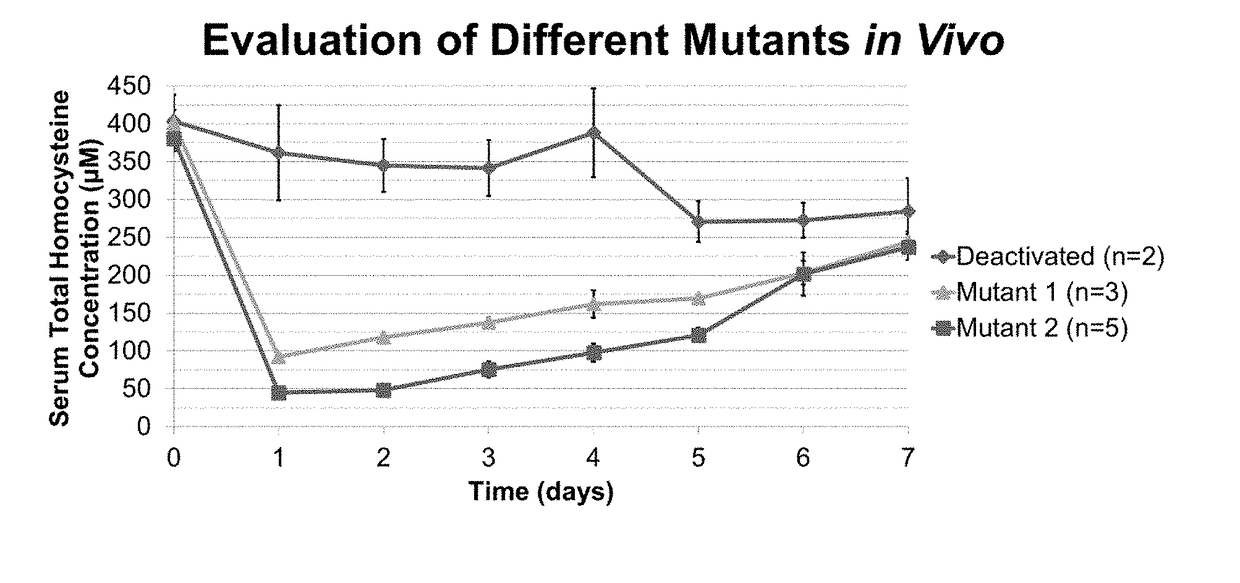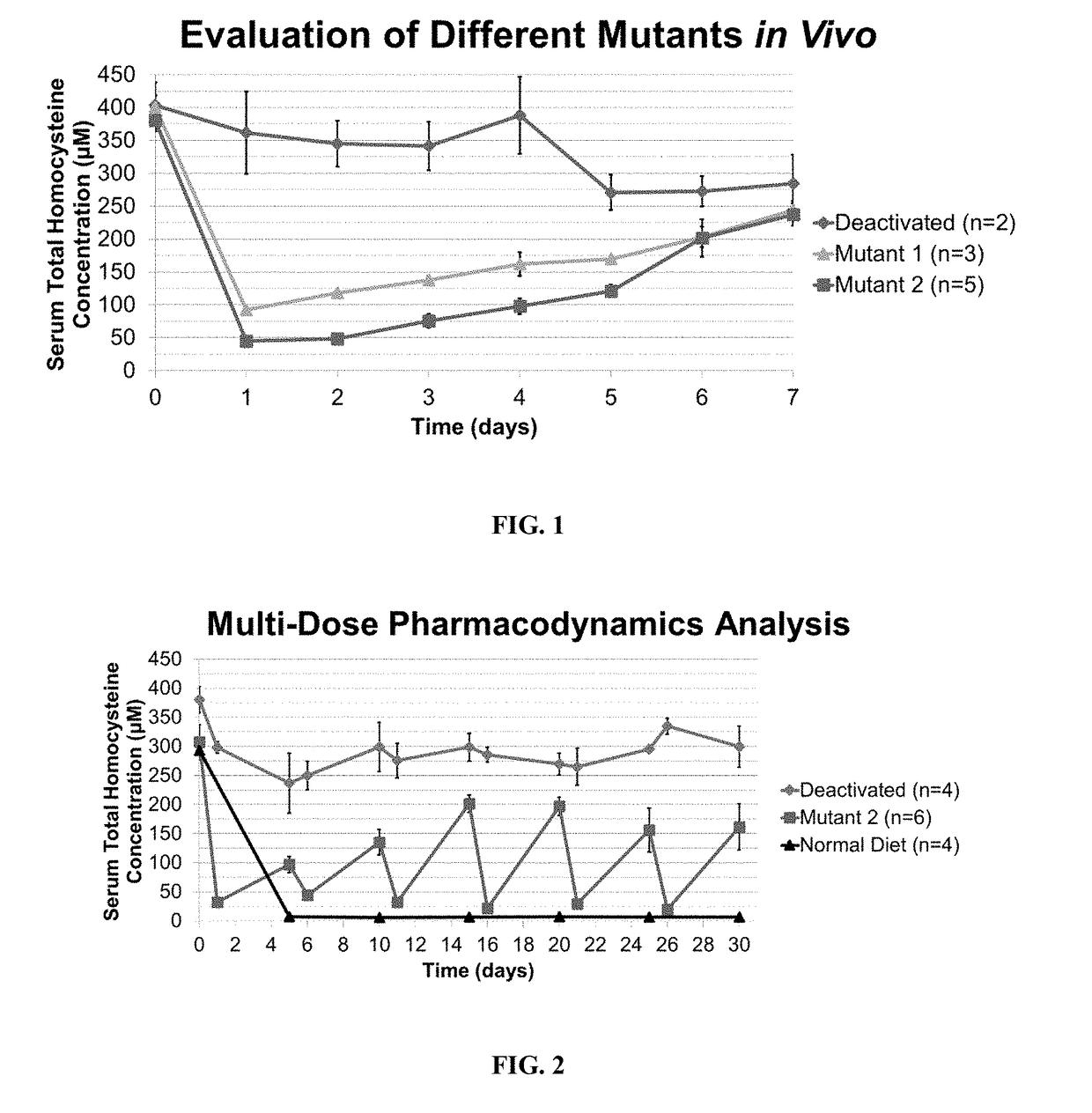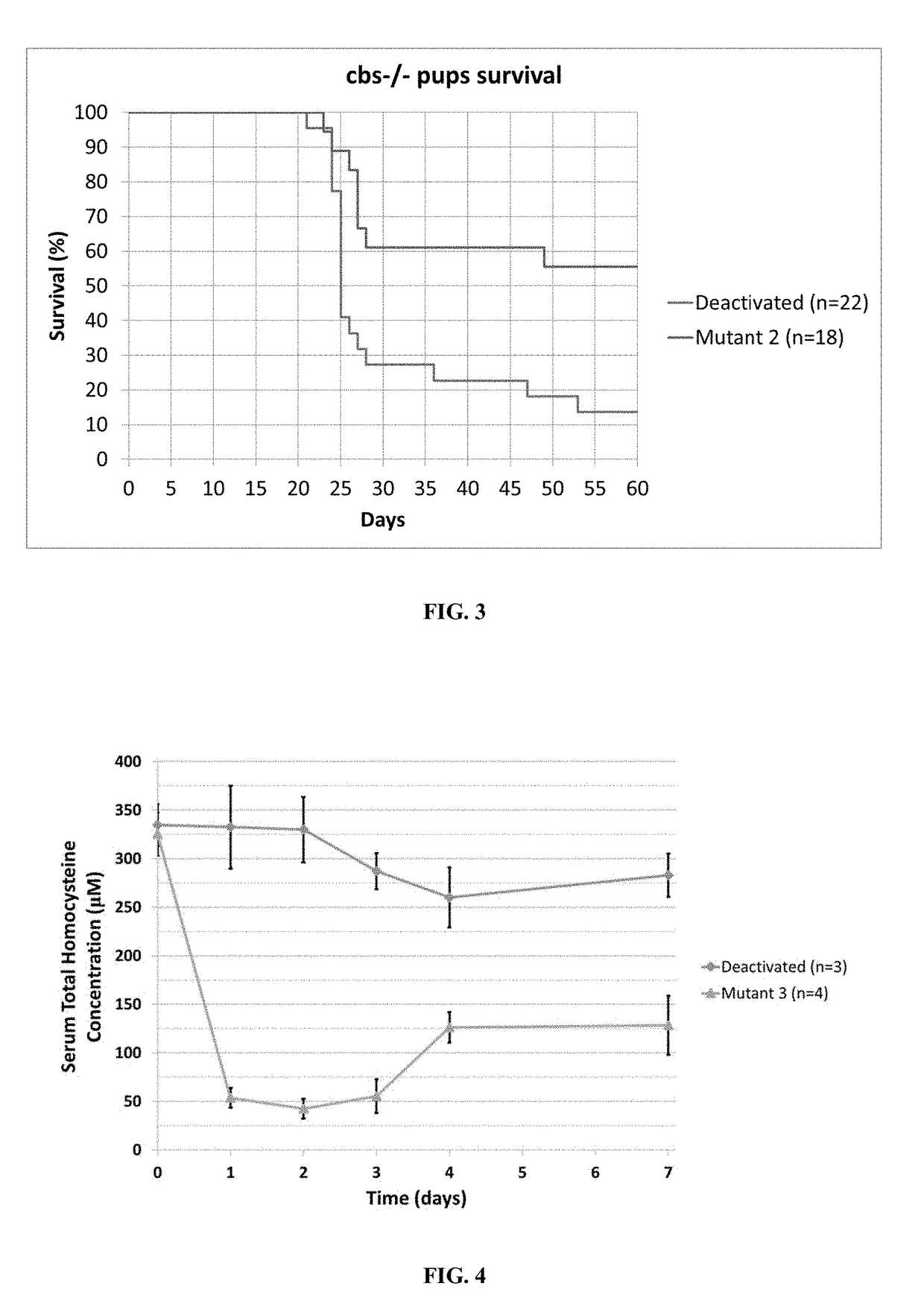Human-enzyme mediated depletion of homocysteine for treating patients with hyperhomocysteinemia and homocystinuria
a technology of homocysteine and human enzyme, which is applied in the direction of lyases, extracellular fluid disorders, peptide/protein ingredients, etc., can solve the problems of moderate to limited efficacy, increased risk of blood clots, and significant fluctuation of responses, so as to reduce the serum homocysteine level (thcy)
- Summary
- Abstract
- Description
- Claims
- Application Information
AI Technical Summary
Benefits of technology
Problems solved by technology
Method used
Image
Examples
example 1
of a Mouse Model of Hyperhomocysteinemia with a Human Cystathionine-Gamma-Lyase Variant Enzyme
[0203]Classical homocystinuria is caused by a genetic defect in the cystathionine-β-synthase gene. Disruption of this metabolic pathway results in hyperhomocysteinemia, a condition where serum levels of total homocysteine (tHcy) are severely elevated. Hallmarks of homocystinuria include problems with the skeletal, ocular, vascular, and nervous systems. These symptoms are likely the result of homocysteine accumulation in serum as well as intracellularly.
[0204]The aim of this work is to develop a novel, enzymatic therapeutic capable of degrading excess serum homocysteine, providing a sink for intracellular homocysteine, and create a new treatment for homocystinuria. The human cystathionine-γ-lyase (CGL) enzyme has been engineered to degrade homocysteine and homocystine. Using random and rational mutagenesis, libraries of CGL variants were generated, and clones were identified through a geneti...
example 2
d Kinetic Characterization of Higher Specificity Homocysteine / Homocystine Degrading Variants
[0207]The gene coding for the Mutant 2 enzyme (SEQ ID NO: 6) was used as a starting point to generate further variants with improvements in enzymatic activity or selectivity to homocysteine or homocystine. Active site residues hypothesized to coordinate substrate binding were selected for saturation mutagenesis and subsequent libraries were generated by overlap extension PCR (polymerase chain reaction). The final assembled PCR products were digested with NcoI and EcoRI and ligated into pET28a vector using T4 DNA ligase. The resulting ligations were transformed directly into E. coli (BL21) and plated on LB-kanamycin plates for subsequent screening (as described in U.S. Pat. No. 9,481,877, which is incorporated herein by reference in its entirety). Two times more colonies than the theoretical diversity of the libraries were screened. Clones displaying significant activity were isolated and sequ...
example 3
ine Pharmacodynamics of Mutant 3 in Mice with a Diet-Induced Mouse Model of Hyperhomocysteinemia
[0208]A high methionine diet (2.5% w / w as opposed to the normal 0.6% w / w as described in Example 1) was used to induce hyperhomocysteinemia in mice. Such mice were administered a single dose 50 mg / kg animal weight (i.p.) of either Mutant 3 (SEQ ID NO: 37) or deactivated enzyme. Mutant 3 in the high methionine diet mouse model resulted in a statistically significant reduction of tHcy from 335±37 μM to a nadir of 42±20 μM within 48 hours (FIG. 4).
PUM
| Property | Measurement | Unit |
|---|---|---|
| Enzyme activity | aaaaa | aaaaa |
Abstract
Description
Claims
Application Information
 Login to View More
Login to View More - R&D
- Intellectual Property
- Life Sciences
- Materials
- Tech Scout
- Unparalleled Data Quality
- Higher Quality Content
- 60% Fewer Hallucinations
Browse by: Latest US Patents, China's latest patents, Technical Efficacy Thesaurus, Application Domain, Technology Topic, Popular Technical Reports.
© 2025 PatSnap. All rights reserved.Legal|Privacy policy|Modern Slavery Act Transparency Statement|Sitemap|About US| Contact US: help@patsnap.com



